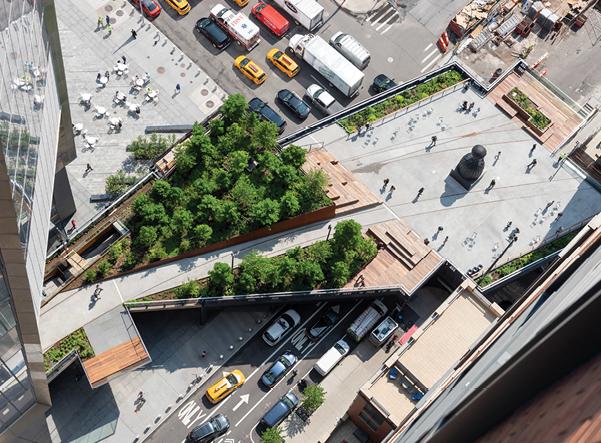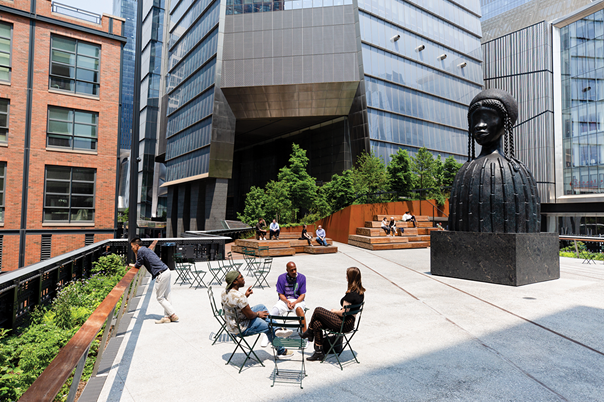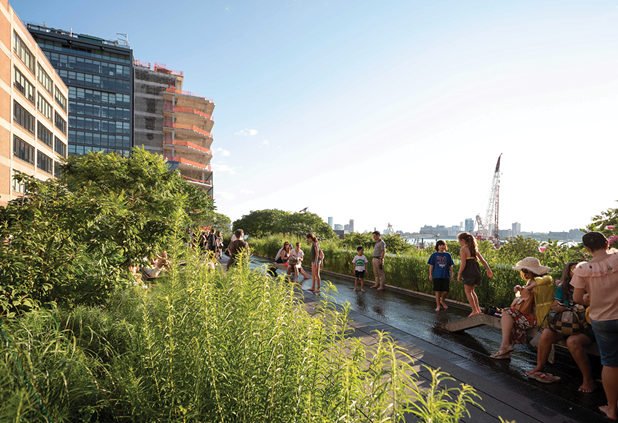- Home
- Media Kit
- Current Issue
- Past Issues
- Ad Specs-Submission
- Ad Print Settings
- Reprints (PDF)
- Photo Specifications (PDF)
- Contact Us

![]()
ONLINE

A Park of the City
Editors’ Note
Prior to the High Line, Robert Hammond worked as a consultant for the Times Square Alliance, Alliance for the Arts and National Cooperative Bank (NCB), and served as an Ex-Officio Trustee of the Metropolitan Museum of Art. The American Academy in Rome awarded Hammond with the Rome Prize in 2009 and, in 2012, he received an Honorary Doctorate from The New School. In 2013, Hammond and his business partner, Joshua David, were awarded the Vincent Scully Prize by the National Building Museum. Hammond graduated from Princeton University with a degree in history.
Organization Brief
Founded by neighborhood residents in 1999, the High Line (thehighline.org) is a public space where you can view art, walk through gardens, experience a performance, or just connect with friends and neighbors, all while enjoying a unique perspective of the city. Built on a 1.45-mile-long historic, elevated freight line running from Gansevoort Street to 34th Street on Manhattan’s West Side, the High Line has become a world-renowned inspiration for how cities can transform industrial infrastructure into beautiful, hybrid public spaces.

Various views of the 1.45-mile-long High Line
on Manhattan’s West Side
Will you tell the High Line story?
It started 20 years ago. Joshua David, who is the other co-founder, and I met at a community board meeting. The High Line was slated for demolition and it had not been in use for about two decades. There were a group of property owners that wanted to tear it down so we both went to this first community meeting. We did not know each other, but we met at that meeting. We decided to start a group to save the High Line.
Our goal was to just stop it from being demolished. We partnered with the Bloomberg Administration and sued the city to stop it from being demolished and then we partnered with the Bloomberg Administration as a public/private partnership to help design it and raise the money to build it, and now we operate it. It cost about $300 million to build. The city put in about half the money and we raised the rest privately. What most people don’t know is that we manage it as a nonprofit and we raise annually almost all of our funding.
We have about an $18 million annual operating budget. We work with the parks department because they actually govern the space, but we have a licensing agreement to run and operate it. When we opened, we thought that we would have about 300,000 people visit a year since that’s about how many people the Whitney or the Guggenheim had. We thought it would be great if we could get that many people. The first year we actually had one million visitors and this year we will have about eight million people. The success has blown us away.

How critical has the design of the High Line been to its success?
Josh and I aren’t designers or architects. We always said that the city and the neighborhood should decide what the High Line should look like. One of the advantages of it taking a decade to build was that there was a lot of time for people to coalesce around a shared vision.
Many parks are meant to help you escape from the city, whereas the High Line is a park of the city. It’s not an escape. You see the traffic. You smell the smells. You see the buildings. I think that’s one of the reasons it really works.

How critical has it been to have such an engaged board for the High Line?
Our board chair has been on the board for 20 years and we have a lot of board members that have been with us from the beginning. We also have a lot of new board members which is important. I think one of the things that everyone shares is a deep commitment to the High Line.
Are you able to take moments to reflect and celebrate what the High Line has become and the impact it has made on New York City?
One of my favorite things to do is just take people for walks on it. It’s continually changing. Literally, week to week it looks different because of the planting. Year to year it looks different because of the art and the buildings around it. This neighborhood is a microcosm of what’s happening all over the city. Walking the High Line is like a master class in the changing of the city. My favorite time is to go at night, especially in the summer when we are open until 11:00 PM. Seeing so many different people using the High Line is what gets me excited.![]()